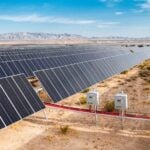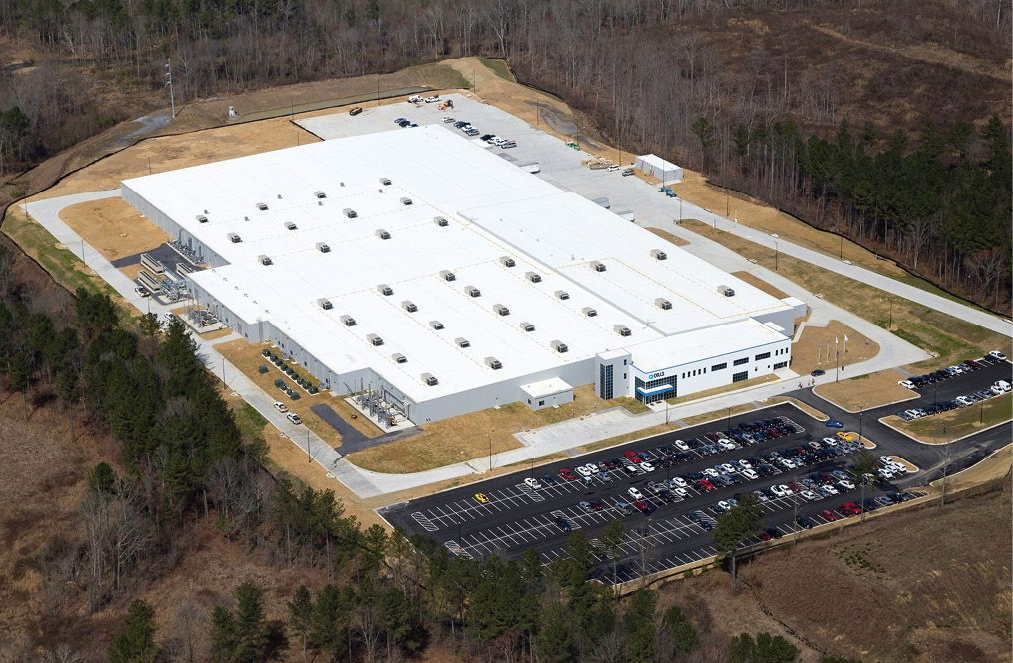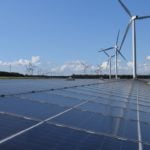Increasing the voltage of PV systems has been a key element of this progress as higher voltages unlock a range of system benefits that translate into lower costs. Liam Coman, solar market analyst at S&P Global Commodity Insights, explains to PV Tech Power: “By increasing voltage while holding current constant, systems can transmit more power while improving efficiency. Increasing voltage also means less components on site, reducing costs and complexity.”
These factors have historically driven upgrades to standard voltage specifications, with higher voltages decreasing the number of components needed to generate the same power. This lowers capital expenditure (capex) across various elements and reduces operational costs over time, as fewer inverters and balance-of-system (BOS) components require maintenance. Additionally, a decrease in DC-side resistance losses allows more power to reach the inverters, leading to higher energy yields and a marginally better return on investment.
The industry initially moved from 600V to 1,000V to pursue these benefits before 1,500V was adopted as a de facto standard. The most recent shift arguably began in 2012 when GE’s newly developed 1,500V DC open circuit central inverter was installed by Belectic in Germany. GE then continued to work with First Solar’s 1,500Vrated modules on US pilots in 2014.
The 2kV FlexInverter solar power station was released in September 2024, over a decade since GE’s 1,500V inverter. Image: GE Vernova.
Standards and technology converging
Now, over a decade after its 1,500V system was released, GE Vernova has announced the next iteration of its inverter technology: the 2,000V (2kV) FlexInverter system. According to Owen Schelenz, solar and battery energy storage product leader at GE Vernova, the apparent pause before progressing to higher voltages was not necessarily a result of slow-moving technology development.
“In 2012 we had the first 1,500V inverter really maxing out the low-voltage directive and then we stayed there for a decade. There was really nothing that stopped us other than limitations of standards,” he explains.
“The challenges are primarily around certification, which engineers need to provide for bankability and project sign-off. The whole industry gets caught up in this wait and see [loop]…because there are no references [or] bankability assessments. That’s why we were stuck for a long time at 1,500V.”
The wait for new safety standards to be developed by UL Solutions (UL) in the US or the International Electrotechnical Commission (IEC) has been a key determining factor in when transitions to higher voltages occur. European regulation has generally reflected UL standards, with 1,500V considered to be the low-voltage DC limit since 2014, before IEC and UL module standards were harmonised further in late 2017.
UL has continued to lead in development to higher levels, with an October 2023 update to the UL 1741 safety standard covering inverters “paving the path for testing at higher voltages” with a GE Vernova customer willing to take the plunge with new system architecture.
Schelenz explains: “You have to find somebody that’s crazy enough to want to be first because nobody wants to be first in an industry like this. We finally found that catalyst [with] a customer that is innovation friendly, can bank or finance projects, and is their own AHJ [authority having jurisdiction] able to assess the risk behind the projects themselves,” he says.
The unnamed North American customer brought together GE Vernova, Shoals Technologies and Jinko Solar to test 2kV rated solar systems at a pilot that went live in January 2025. Together the project partners converted a 1,500V block of an existing project, taking the section’s capacity from around 4MW to 6MW without changing the footprint.
Each company brought leading technology to the 2kV upgrade, although Jinko is the only project partner to have achieved UL certification for its 2kV solar modules. At the time of writing, GE Vernova was still awaiting UL 1741 SA certification for its FlexInverter 2kV system, while Shoals is one of the first to undergo UL testing for its electrical BOS (EBOS) solutions. According to Troy Renken, vice president of product and engineering at Shoals, the availability of varied 2kV components made the pilot project a success.
“You really have to think about it as a whole system [and] make sure that your modules, your EBOS and your inverter all meet that 2kV DC rating,” he tells PV Tech Power.
Overcoming technical challenges
This step up in voltage required Shoals and GE Vernova to tackle specific issues related to the move to 2kV. For example, BOS solutions become more sensitive to leakage current, a key indicator of insulation integrity, while creepage distances need to be increased between conductors throughout the system to prevent arcing.
Schelenz adds: “I don’t think anyone thought this was going to necessarily be challenging. Perhaps a better word to use is that it’s a bit tedious because of the lack of component availability. You have to work through component-by-component [with] certification agencies.”
By boosting voltage without impacting current, the FlexInverter 2kVdc system can increase power output by 30% within the same footprint. Fewer of the power-dense inverter units are needed on site, creating knock-on reductions in capex across the project.
Renken says: “A lot of the similarities between now and when there was interest in moving from 1,000V to 1,500V boils down to the key words ‘fewer or less’. When you increase that voltage it means, for the same exact size of site with the same exact number of solar modules, you’re going to end up with fewer strings and fewer inverters.”
GE Vernova has suggested a 2-3% project-level saving can be made from the reduction in necessary DC cable alongside fewer power stations, strings, combiner boxes and connectors.
Schelenz says: “The savings are not earth-shattering [but] you get one or two cents a watt for a project and that’s not nothing. If you then look at the sustainability aspect, we will ship 30% more power conversion capability for the same steel in a container. All of a sudden, steel usage goes down, logistics go down because for one shipment we pack more power. Then efficiency tends to go up because you can use less cable than you did before. So in terms of everything that’s impacting the supply chain, it’s very beneficial.”
Project savings have also been reported in China, where 2kV projects have already moved past small-scale pilots. The 182MW Mengjiawan PV project, jointly built by China Huaneng Group (CHNG) and Sungrow, was grid connected and commissioned in Yulin, Shaanxi Province, in summer 2023. The use of 2kV modules, developed with DAS Solar and deployed across 34 subarrays, and inverters from Sungrow reduced EBOS costs by a reported RMB0.04 (US$0.55) per watt compared to 1,500V systems.
Forming the supply chain
While these initial projects show encouraging signs of the benefits inherent to increasing voltage, a lot needs to happen before the transition to 2kV as a new industry standard is achieved. The supply chain has yet to fully form around the technology, with only a handful of module suppliers in addition to Jinko, such as Astroenergy and TrinaSolar, achieving certification of some kind for their 2kV solutions. The challenge also lies in getting 2kV subcomponents certified and available on the market as part of completed solutions.
ABB has been at the forefront of increasing voltage capabilities in the past, releasing a line of 1,500VDC disconnect switches and other components in late 2014. Less than ten years later, the company had developed a 2kV-rated switch disconnector but faced delays in getting the equipment certified to UL standard 98B.
Brian Nelson, renewables segment leader for ABB, says: “The reality is that ABB had a switch capable of being UL listed a year and a half ago but the standard didn’t exist or wasn’t extended to 2kV.
“It’s okay to have a science project that is not UL to [show] it is possible, but it’s not okay to have a product that isn’t meeting a UL standard for broad adoption. We now have a UL-listed switch, so in a way we’ve hit the finish line of our development and now it’s the starting line for [our customers]. They have to take our switch and put it in their combiner and get that UL listed. It’s a domino effect of getting that UL listing, which then leads to everything else.”
While UL does not have to provide the testing that would result in a certification, it is viewed as the preferred testing body due to the fact that it develops the standards that new products must reach. This means that technology providers, such as Shoals, are seeking it out as the first option.
“We’re strategically choosing to work with UL because they are the authors of the standard. We feel that gives us the fastest path to getting a listed product because the interpretation of the standard is a bit easier [and] it instills the most confidence in the industry,” said Renken.
“From a regulatory perspective, we have all the parts in place in terms of the standards that we need for EBOS so we have been working with the major component manufacturers to make sure they have products that are going to work for our systems. In almost every category we have more than one manufacturer who has a product that meets the new 2kV standard. Then what we have to do is bring all of those components together and test it as a system to achieve the UL regulatory certification that we need.”
This process is not simple, as Nelson explains: “Going from 1,500V to 2kV is not an easy thing to do. We’re starting to talk about a pretty substantial DC voltage, and so, technologically, as a component supplier, that’s a technical challenge that took us a little while to figure out. Then you have to wait for the standard to be ready so that we can test to make sure that it’s safe.
“That really is the missing link to this. When that happens, I think we’ll start to see some developers really start to consider this with their EPC partners. It’s the lack of a totally UL-compliant solution that is holding us back.”
ABB has been waiting for testing standards to catch up with its development of a 2kV switch disconnector. Image: ABB.
Ready and waiting
There are, however, components ready and waiting to accommodate higher voltage systems. Solar tracking solutions have come to dominate the utility-scale sector, utilising sensors and motors to orient solar panels for optimal generation. Unlike many other components, they require little change to take 2kV systems depending on their existing design.
GameChange Solar has successfully installed and commissioned tracking systems for 5MW worth of 2kV modules at a new build site in the south-east of the US. As chief engineer Scott Van Pelt tells us, the design of the company’s Genius Tracker racking system was already wellsuited to 2kV systems.
“The GameChange system does not have parasitic losses, so we don’t pull energy from the string wires. We have a stand alone charging module battery that’s powering the motor, and obviously that makes things significantly simpler in that our system does not have to be rated for 2kV directly while still being able to support a 2kV system,” he says.
“Our system is flexible enough that the change in string length does not cause a big design lift or strain on our engineering resources.”
The limited interaction with the site’s other components meant the system could be verified compatible with approved components for operation at 2kV. The review was conducted by Intertek, which evaluated the Genius Tracker under UL 2703 standards and confirmed that no additional testing or modifications were required. This expeditious process through Intertek demonstrates that standardisation can be achieved without joining the queue forming around UL.
The Mengjiawan PV project – 2kV at scale
The project, claimed to be the world’s first grid-connected demonstration of a 2kV system, brings together 2kV n-type bifacial double glass modules developed jointly by CHNG and DAS Solar’s research and development (R&D) department with new inverter technology from Sungrow, which developed the equipment under a RMB2.45 billion (US$341.47m) investment programme.
The DC side of the project is said to occupy the smallest area for a project of its size among centralised PV sites in northern China, covering 11.3 hectares per 10MW. According to DAS Solar, the 30% increase in installation capacity of individual modules resulted in significant savings in DC cable and combiner box usage.
The company says it carried out thorough insulation tests and 13,500V high-voltage withstand tests on the supplied 2kV modules. Sungrow, meanwhile, developed intelligent graded shutdown technology and adaptive voltage and power control algorithms for its 2kV inverters.
In addition to reduced BOS costs, the project partners have claimed faster build-out times, lowered costs for infrastructure construction, equipment transportation and maintenance and higher energy yields.
2kV as an industry standard
The question, therefore, remains: when will the transition to 2kV take hold? Previous increases in voltage across the sector have generally occurred years after the first products appeared on the market. Standards need to catch up to the pace of change driven by the market before they can be understood by the developers and EPCs deploying projects.
Cormac Gilligan, director of research and analysis for clean energy technology at S&P Global Commodity Insights, says: “UL and the IEC are working on updating standards, but widespread adoption requires developers and engineers to understand these protocols before mass adoption. Until pilot projects demonstrate reliability and cost savings, developers and EPC companies are cautious about adopting 2kV, given the higher perceived risk and limited supplier base.”
This timeline, according to S&P Global Commodity Insights, will see 2kV move from pilot stage into the mainstream in 2026/27, ramping up in installations to become the industry preferred voltage in 2028/29 (see Figure 1).
Figure 1. 2kV could become the industry standard by the end of this decade. Data compiled October 2024 by S&P Global Commodity Insights. Image: S&P Global.
Nelson agrees with this assessment, having rowed back from his previous claim that 2kV could become the standard by the end of 2025.
“The industry is going to be talking about it a lot more, but are projects going to be built at 2kV at the end of this year? No, I don’t think so. I think this is probably more of an end of 2027, even into 2028, deal if I want to be more realistic,” he says.
Consensus on the 2027/28 timeline of industry adoption of 2kV is also shared by Schelenz, who believes the maturing of engineering prowess across the solar value chain, including among customers, will result in a faster transition.
“I think 2027 will be the first year we do a number of projects that will be 2kV, and then hopefully 2028 is off to the races,” he says.
These races will take place in the US and China first, according to Coman, reflecting the steps that have already been taken towards 2kV systems. While some European standards have already been harmonised with the US, Coman believes the European market, along with the rest of the world, will “likely be 12-18 months behind the US and China adopting the technology”.
Moving beyond 2kV?
Where Europe is potentially ahead of competing markets is in looking beyond 2kV to the next stage of development. The evolution from 600V has been a predictable one and, according to Schelenz, 2kV “is by no means the final boss of voltages and string configurations”.
He explains: “2kV won’t be the end. If you look at Germany, the Fraunhofer team has a working group that we’re a part of for 3kV. Beyond that, there are other topologies we’re working on that will further disrupt the way we think about solar plants and battery plants. It’s always a continuum [and] we’re always pushing for new heights.”
Nelson agreed that 3kV is likely to be the next step for utility-solar in the coming years, despite the standards for this “big jump” being far from development. Coman believes the timeline will depend on the adoption of 2kV, as the industry continues its slow march to ever higher voltages.
“This jump will not occur until 2kV supply chains are fully matured and all cost benefits have been fully utilised. [We] expect this jump to the next voltage to happen sometime in the early 2030s,” he adds.
The transition to 2kV is, therefore, just the latest step along a familiar path to greater efficiency and lower costs. As with previous voltage increases, widespread adoption remains contingent on the fast development of standards, availability of components across the supply chain and bold customers willing to try out the latest innovations. But with projects already underway and interest growing around the world, the move to 2kV seems as inevitable as previous voltage increases. The question is not if voltage will increase to 2kV, but how long before the industry moves even higher?
https://www.pv-tech.org/the-2000v-transition-why-utility-solar-is-ready-for-its-next-leap/





